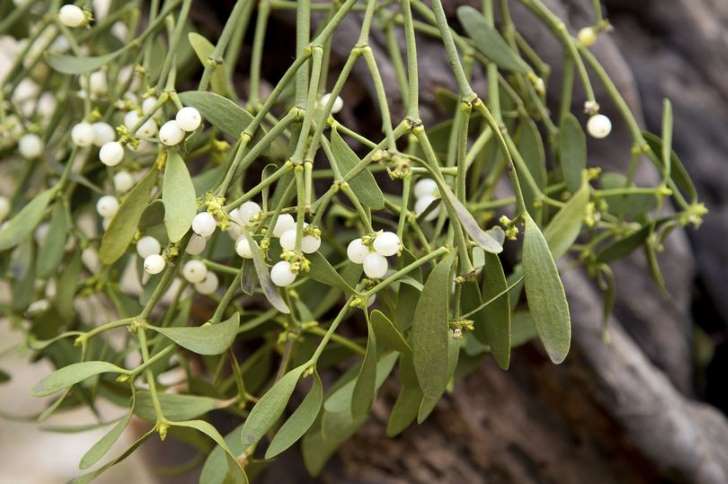You’re standing in a bar chatting to a handsome stranger and would never dream of puckering up and lunging at him (because, well, that’s weird).
But look towards the ceiling and there’s mistletoe – great! Here’s your chance to plant one on him.
Hang on…why? Why does the fact someone has taped a few branches of a plant to the ceiling change the dating rules?
Have we ever stopped to think about how this tradition started and why we can take advantage of it?
Mistletoe has long been considered a ‘romantic’ plant – as far back as the Celtic Druids of the first century – because of its ability to blossom even during freezing winters, according to History.com .
By the 18th century, it had become widely incorporated into Christmas traditions and men were allowed to “steal a kiss” from any woman caught standing under the mistletoe.
Refusing was seen as bad luck – so if someone tries to kiss you under the mistletoe at the Christmas party (and you actually want to kiss them) maybe really consider if you want to.

Another tradition saw men pluck a berry from the branches for each kiss they had – until they were all gone, and then they had to stop kissing.
But there’s a more beautiful tale in Norse mythology about the festive favourite.
According to the legend, “when the god Odin’s son Baldur was prophesied to die, his mother Frigg, the goddess of love, went to all the animals and plants of the natural world to secure an oath that they would not harm him.
“But Frigg neglected to consult with the unassuming mistletoe, so the scheming god Loki made an arrow from the plant and saw that it was used to kill the otherwise invincible Baldur.
“According to one sunnier version of the myth, the gods were able to resurrect Baldur from the dead. Delighted, Frigg then declared mistletoe a symbol of love and vowed to plant a kiss on all those who passed beneath it.”
The plant has always been associated with fertility and vitality.
By the 18th century it had been incorporated into Christmas tradition.
And now it’s a staple decoration in Christmas parties across the land.












